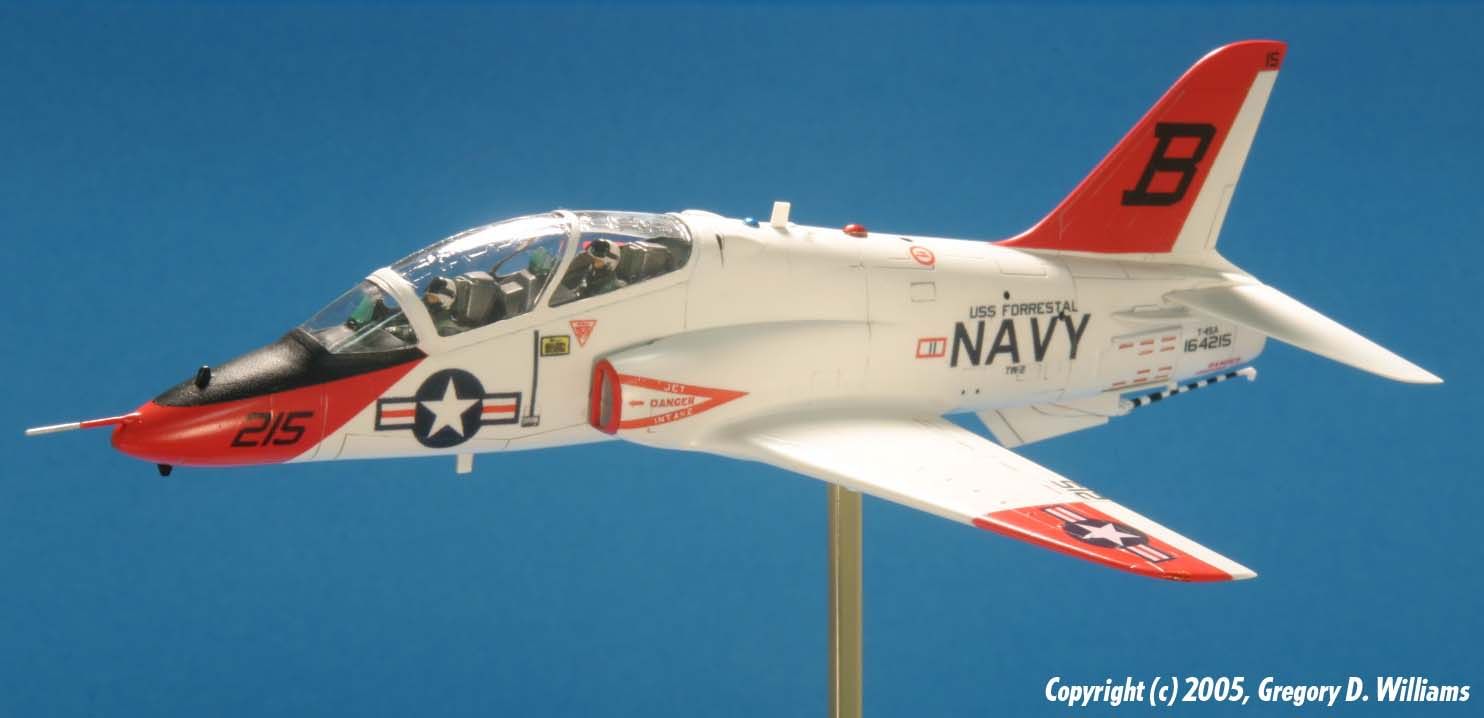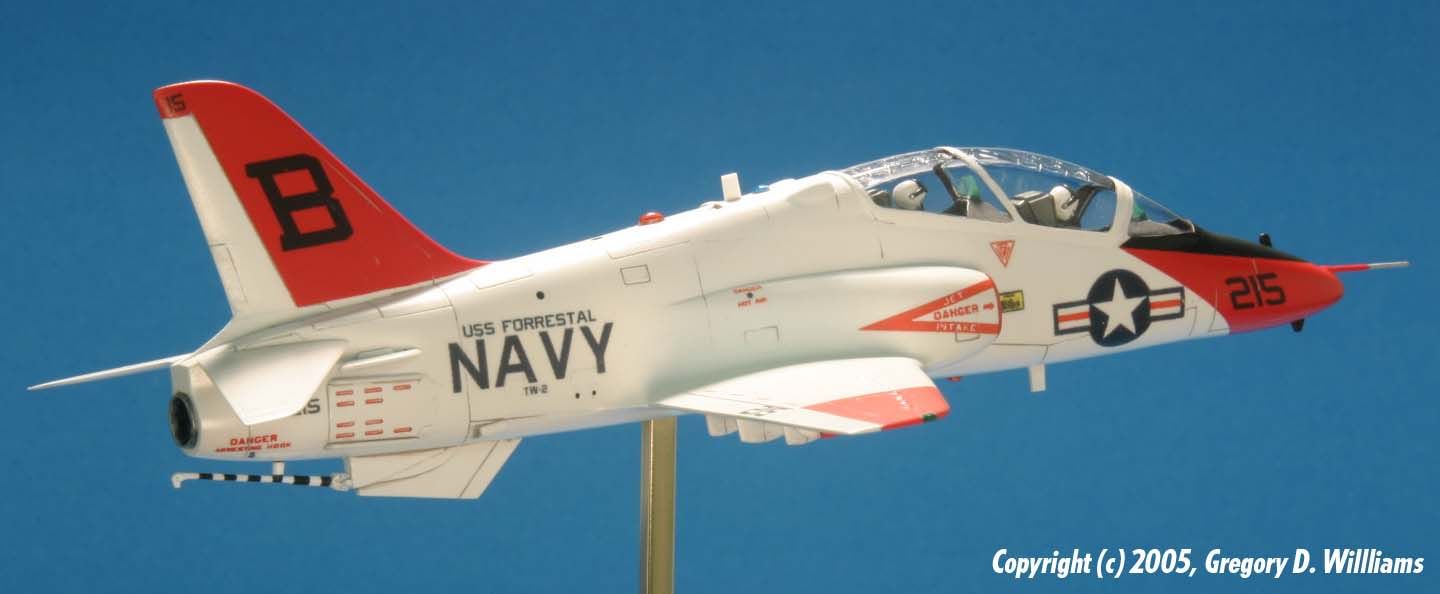- Member since
January 2003
- From: The Hoosier State
|
I have been tinkering with acrylics a bit as well, and have recently finished a model entirely with Tamiya paints. The paint scheme was day-glo red and white for a T-45A Goshawk. Being that my base color was white, It would have to serve as a primer for the subsequent red areas. For the base white, I thinned the Tamiya with laquer thinner and airbrushed the model as normal. The paint airbrushed very well, at a ratio of approx. 2:1, compressor at between 15 and 18 psi. I allowed the white base color to cure for a day, but I noticed that the paint had cured in half that time. As someone had metioned above, I had a few rough areas I wanted to lightly sand as well. I was able to gently sand these minor rough areas with a Squadron fine sanding stick with no problems, as long as I went lightly. After sanding, the offending areas were smooth and no paint came off. This is the method I use when airbrushing acrylics, especially when laying down base coats for subsquent colors for a very nice finish. After airbrushing base coats, thinning with Laquer thinner, I thin subsequent colors with denatured alcohol and airbrush as normal. Check out the finished model below.
Italeri 1/72nd scale T-45A Goshawk


Greg Williams
Owner/ Manager
Modern Hobbies LLC
Indianapolis, IN.
IPMS #44084
|